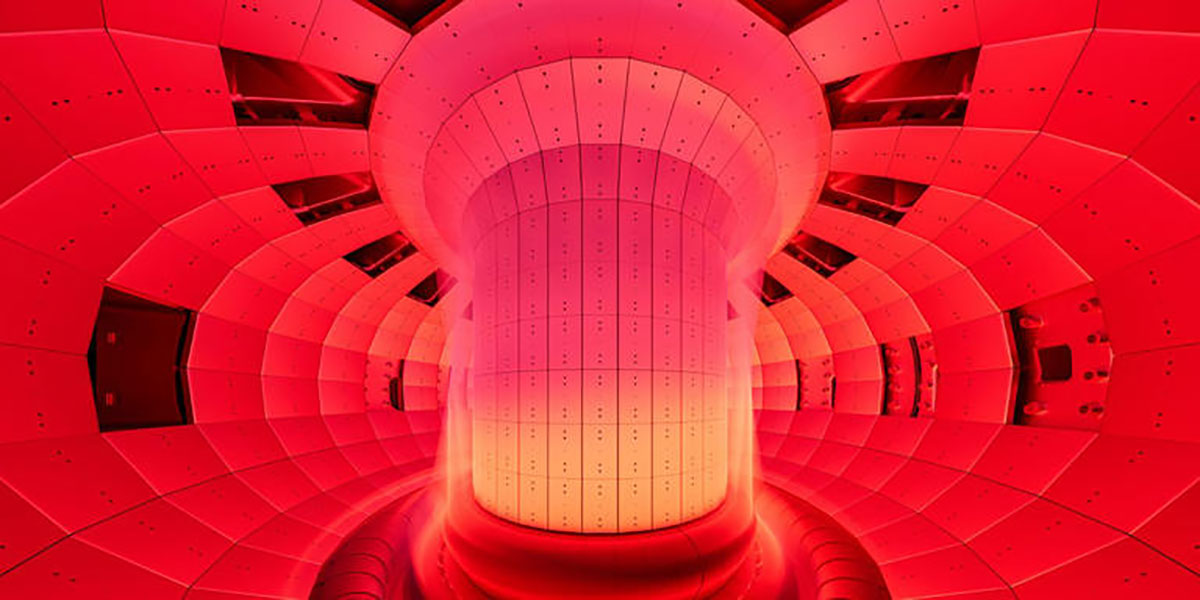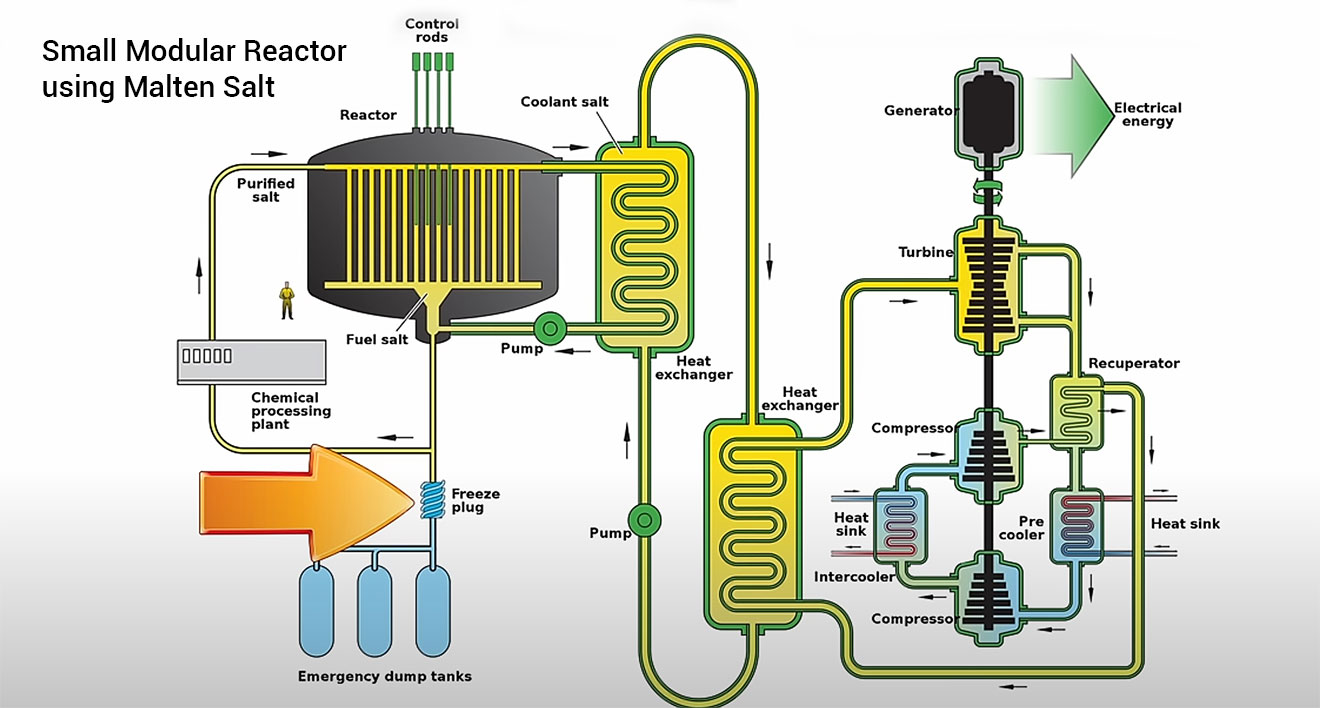Can Small Modular Reactors play a role in integrated energy systems?

Life on Earth would not exist without our giant, glowing ball of gas, the Sun, called the "Yellow Dwarf". But just how hot is the Sun? Well, that depends "where on Sun you look at it" ...
The temperature varies significantly across different parts of the Sun. At its core, the temperature reaches around 27 million degrees Fahrenheit (15 million degrees Celsius) due to intense nuclear fusion. However, at the surface, it cools down to roughly 10,000 degrees Fahrenheit (5,500 degrees Celsius), according to NASA.
Every second, the Sun's core fuses approximately 600 billion kilograms of hydrogen into helium, converting around 4 billion kilograms of matter into energy. In about 4 to 7 billion years, as hydrogen fusion in the core slows down and the Sun can no longer maintain hydrostatic equilibrium, the core will become denser and hotter. This will cause the Sun's outer layers to expand, transforming it into a red giant. During this phase, the Sun will grow large enough to make Earth uninhabitable, which is projected to occur around 5 billion years from now.
So, stay cool, there's still a bit of time left — and maybe have a Tooheys or two to relax.
What's not so cool is figuring out what to do with CO2. If we don't act soon, we humans have only a tiny fraction of this remaining time to keep enjoying that Tooheys or two.
Nuclear fusion, the process that powers stars like the Sun, occurs when two atomic nuclei fuse together to form a heavier nucleus, releasing vast amounts of energy. This reaction has long been considered the "holy grail" of clean, limitless energy, as it produces no long-lived radioactive waste and uses fuel sources, like hydrogen, that are abundant on Earth.
REBCO superconductors, plasma confinement, and the fusion of two atoms are key technologies being developed to make nuclear fusion possible. Here’s how they work together:
Plasma Confinement: Fusion requires extremely high temperatures—millions of degrees Celsius—to overcome the electrostatic forces between atomic nuclei, allowing them to fuse. At such temperatures, matter exists as plasma, a state in which electrons are separated from nuclei. Containing and controlling this hot plasma is one of the biggest challenges in fusion. Scientists use magnetic confinement systems, such as tokamaks and stellarators, to keep the plasma stable and away from the walls of the reactor.
REBCO Superconductors: To generate the powerful magnetic fields necessary for plasma confinement, REBCO (Rare Earth Barium Copper Oxide) superconducting tapes are emerging as a critical technology. REBCO tapes can carry extremely high electrical currents with almost zero resistance when cooled to cryogenic temperatures, enabling the creation of strong and stable magnetic fields. These superconductors are lighter and more efficient than traditional conductors, making them ideal for building compact and powerful magnetic coils that can control plasma in fusion reactors.
The Fusion Reaction: At the core of nuclear fusion, two hydrogen isotopes (like deuterium and tritium) collide with enough force to fuse into a helium atom, releasing vast amounts of energy in the form of heat. Achieving the conditions for this reaction—high temperature, high pressure, and confinement—requires advanced magnetic fields and plasma control technologies. This is where REBCO superconductors come into play, providing the necessary magnetic strength to confine the plasma long enough for fusion to occur.
In summary, REBCO superconductors are key to creating the magnetic fields needed for plasma confinement, while plasma itself is the medium in which the fusion reaction takes place. By fusing two atomic nuclei, we unlock the immense energy potential of fusion, offering a future of clean, abundant energy.
Until fusion reactors become a reality, we do not endorse SMRs due to the presence of reduced radiation, but still lasting and harmful radiation. But here we are, facing the current energy challenges battling reduction of CO2 in a hurry.
What are SMRs?
SMRs are defined as small nuclear reactors with a maximum output of 300 Megawatt electric (MWe) and can produce 7.2 million kWh per day. By comparison, large-size nuclear power plants have an output of over 1,000 MWe and can produce 24 million kWh per day.
SMRs can vary in size from less than 10 megawatts electric (MWe) up to 300 MWe and can use a range of possible coolants including light water, liquid metal or molten salt, depending on the technology. SMR is the generic term to name such kinds of reactors, but the ones based on non-light water technology are also often called advanced modular reactors (AMRs). They all use nuclear fission reactions to generate heat that can be used directly or for generating electricity.
SMRs comprise the latest technological features and safety advantages and many companies and even countries like China, FRANCE, US are actively funding SMR's - they are also "Green" CO2 free.
Can earth's population wait until Fusion is solved? UNLIKELY-

SMRs -

What are the advantages?
The economics and business case of SMRs are different from traditional nuclear power plants.
SMRs have a range of advantages:
- Besides contributing to the decarbonisation of energy mix, SMRs can help ensuring the stability of the electric grid in a system with a higher share of renewables and increasing electricity demand.
- As they are smaller in size, power output and capacity, they need less space and less cooling water but offer greater flexibility for site selection than large nuclear plants.
- They are modular and can be produced in series, which allows for production cost efficiency through economies of scale.
- As their systems and components can be factory-assembled, they can be transported as modules or even whole units to a location, reducing installation costs.
- They can be integrated in energy hubs in combination with other sources of energy and energy vectors, like renewables and hydrogen.
- They are adapted to supply electricity and additionally capable to supply heat for industrial applications, district heating, as well as for production of hydrogen.
Harnessing Experience and Enhancing Safety with SMRs
Small Modular Reactors (SMRs) build on decades of operating experience from traditional large reactors and leverage the proven technology used in small-scale reactors aboard nuclear submarines and other nuclear-powered vessels, such as icebreakers.
SMRs incorporate passive (inherent) safety systems that rely on simpler designs and enhanced safety features. These reactors have a lower core power output and larger coolant volumes, which together significantly increase the time available for operators to respond in the event of an incident or accident.
One of the key safety principles of SMRs is the use of natural circulation for cooling the reactor core. This approach ensures that even in the case of an incident or accident, the reactor can be safely cooled with minimal or no operator intervention. The passive safety systems used in SMRs eliminate the need for many traditional components, such as safety-grade pumps, valves, and extensive piping networks, thereby reducing the potential for mechanical failures.
Overall, these design features make SMRs inherently safer, as they reduce the complexity of reactor operations and enhance the system’s resilience to potential failures.
Small Modular Reactors (SMRs): A Viable Option for Australia?
- Nuclear Waste Management: SMRs generate nuclear waste, which requires careful long-term storage solutions. While advanced designs reduce waste volume, establishing secure and permanent disposal sites is critical. International best practices suggest deep geological repositories as a safe option, but Australia would need to develop or adapt such a solution.
- Construction Timeline: The time required to build and deploy 160 SMRs in Australia is estimated to be 12-15 years. This timeline includes regulatory approvals, manufacturing, and construction phases. Efficient project management and early stakeholder engagement could help streamline this process.
- Electricity Grid Infrastructure: Integrating SMRs into Australia’s energy grid will require significant updates and expansion. Modernizing the grid to handle decentralized and diverse power sources, including SMRs, is a crucial step towards a resilient and future-proof energy system.
- Installation Costs: The initial capital investment for SMRs is high, with costs ranging between $450 million to $750 million per reactor. However, these costs must be weighed against the long-term benefits of stable, low-carbon energy production and reduced reliance on fossil fuels.
- Scale of Deployment: To meet Australia’s annual power needs, approximately 160 SMRs would be necessary. This large-scale deployment would help ensure energy security and contribute significantly to reducing carbon emissions.
- Security Concerns: SMRs, like all nuclear facilities, could be targets in cases of war or terrorism. However, their smaller size, robust design, and potential for underground installation provide enhanced protection compared to traditional nuclear reactors.
- Public Perception and Sustainability: Public support is essential for the success of SMR projects. Transparent communication, safety assurances, and addressing environmental concerns are key to gaining public trust and ensuring the sustainability of SMR initiatives.

